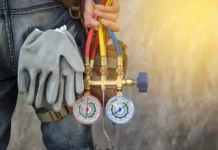Did you know that there are around 12 million registered boats in the United States of America? There is a lot of work and maintenance that goes into boat ownership, and that is even more true if you live in a colder climate. If you’re planning on owning a boat then it is important that you understand the steps to take for boat winterization.
Boat winterization is one of the many boating essentials that northern boat owners know all about. Taking these steps will protect your boat during the winter and have it ready for going boating as soon as spring rolls around. Winterization is an important step to take for all types of boats so don’t make the mistake of thinking that your boat doesn’t need it.
The good news is that you’ve come to the right place to learn about the steps to take for boat winterization. Keep reading this article to learn helpful winterization tips from throughout the boating industry.
Replace Your Engine Oil
The first thing that you’ll want to do when you’re winterizing your boat is to replace all of the oil that is in your boat’s engine. Old oil will cause a buildup of moisture and acids on the inside of your engine while it is sitting in there over the course of the winter. Your best bet is to drain it out so that it doesn’t cause any damage to your engine’s components.
Warm up the engine while you’re in the water in order to get rid of the dirty oil. From there, install a new oil filter and replace the old oil with new, high-quality oil for your engine.
Flush and Drain Cooling Water
With winter right around the corner, you’ll also want to make sure that you drain the cooling water in your boat’s engine. The colder temperatures will cause this water to freeze and expand which could cause significant damage to your boat’s engine. Start by making sure that all of your engine’s drain holes are open.
After confirming that all of these drain holes are open, start your boat’s engine and clean the cooling system. To do this, flush the system with water that is fresh and clean. A garden hose and your house’s water should be perfect for this task. Allow it to flush for a few minutes and you should be good to move on to the next step.
Stabilize Your Fuel
It doesn’t take long for fuel to start to become destabilized, which means that you need to take steps to keep your fuel stable for the entirety of winter. Failure to make your fuel stable will cause a build-up of gum on the inside of the engine that will cause mechanical issues in the future.
A good approach to take is to add a marine fuel stabilizer to the fuel in your boat’s tank. This stabilizer will ensure that your boat’s fuel stays good and stable for the length of the time that it is in storage. Once the stabilizer is added, let your boat’s engine run for a bit to get the stable gas going throughout the engine.
Protect Your Engine Components
You’ll also want to take measures to ensure that you’re protecting the internal engine components of your boat’s engine when you’re doing boat winterization. The last thing that you want is for the fragile internal components of your engine to get exposed to the elements during the heart of winter.
This exposure will lead to issues like corrosion and metal-on-metal scraping. The last thing that you want when you’re going boating the next spring is to find that you’re experiencing cylinder scuffing because you didn’t protect the internal engine components for your boat.
Replace Your Gear Oil
It is also important that you remember to replace your gear oil for your boat. Drain the old gear oil and replace it with a new and fresh supply for the best results. Make sure that you’re checking the engine for moisture during this step.
If you experience strange lumps in your oil or an excessive amount of water then it is clear that something is wrong with your engine’s seals. Make sure that you’re getting replacement seals before you start going boating in spring and summer.
Remove Your Valuables
Now you’re starting to get down to the minute details of boat winterization. The hard work with your boat’s engine is taken care of at this point and you should move on to getting your valuables out of your boat before you move forward.
Boatyards don’t get a lot of people coming through during winter which means that it is prime season for people to steal things off of the boats that are stored there. The last thing that you want is to come back in spring and discover that your valuables are missing with no way of tracking them down.
In addition to removing your valuables, you should also consider investing in boat detailing near me in order to keep your boat looking pristine.
Cover Your Boat
The last step in boat winterization is making sure that you cover your boat for winter. Ideally, you’d store your boat in dry storage but this is expensive and not right for everyone and all types of boats. A great idea to consider is shrink wrapping your boat or covering it with a tarp.
Covering your boat will not only protect it from the elements but will also keep critters and pests from turning it into their winter home. You don’t want to skip this step if you want your boat to be ready for going boating when the warmer temps return.
Start Your Boat Winterization Process
Boat winterization is an important part of boat ownership because it allows you to keep your boat in great condition and save on costly repairs. One of the boating essentials is knowing how to take care of your boat’s engine and get it ready for storage. You should also remember to remove your valuables from your boat before you cover and store it.
For more fun and helpful articles, check out the rest of our website.




















